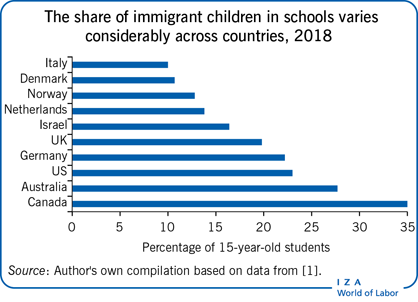Elevator pitch
Many countries are experiencing increasing inflows of immigrant students. This raises concerns that having a large share of students for whom the host country language is not their first language may have detrimental effects on the educational outcomes of native children. However, the evidence is mixed, with some studies finding negative effects, and others finding no effects. Whether higher concentrations of immigrant students have an effect on native students differs across countries according to factors such as organization of the school system and the type of immigrants.
Key findings
Pros
In some countries, test scores of native children are not affected by the presence of immigrant children in the same classroom.
Increased immigration to the US has a small but positive net effect on the high school completion rate of native children.
Immigrant children who have stayed a few years or non-refugee immigrants may have no detrimental effects on their native peers.
If the share of immigrant children in schools is below a certain threshold, it may not affect native children.
Cons
In most countries, a high share of immigrant children in schools leads to lower test scores of native children.
A high share of immigrant students can lead to higher dropout rates from high school and lower chances of passing exams.
Native flight from schools that have many immigrant children can amplify negative effects on native children, as native parents move their children to schools with fewer immigrant children.
Native children with low parental education are most affected by immigrants in the classroom.
